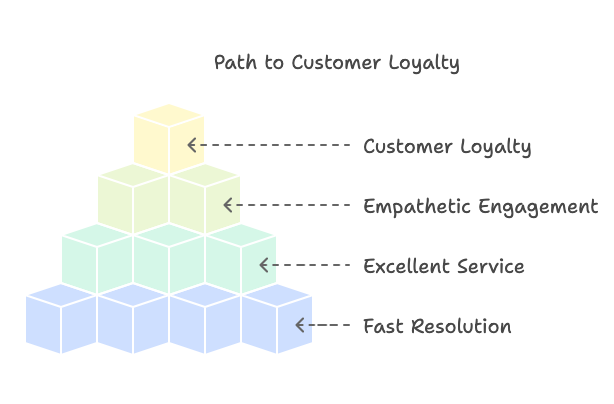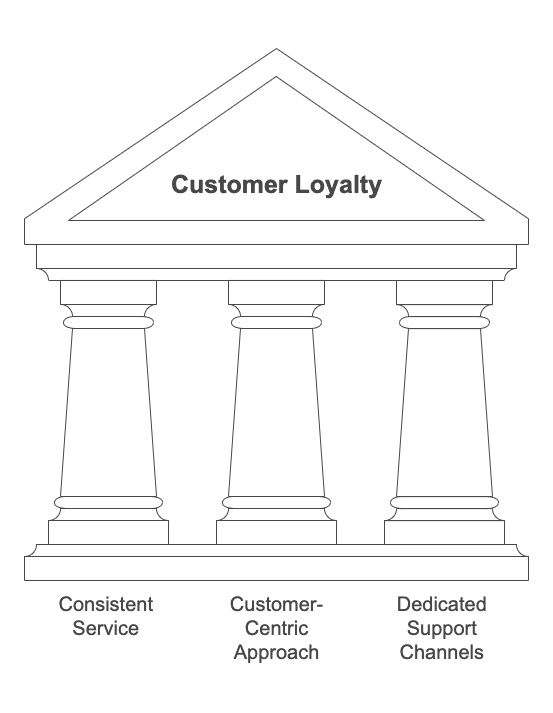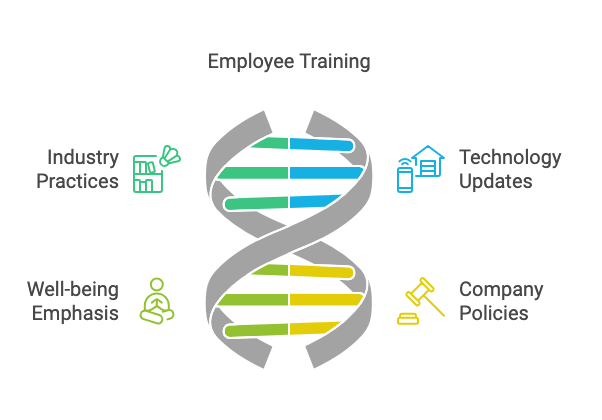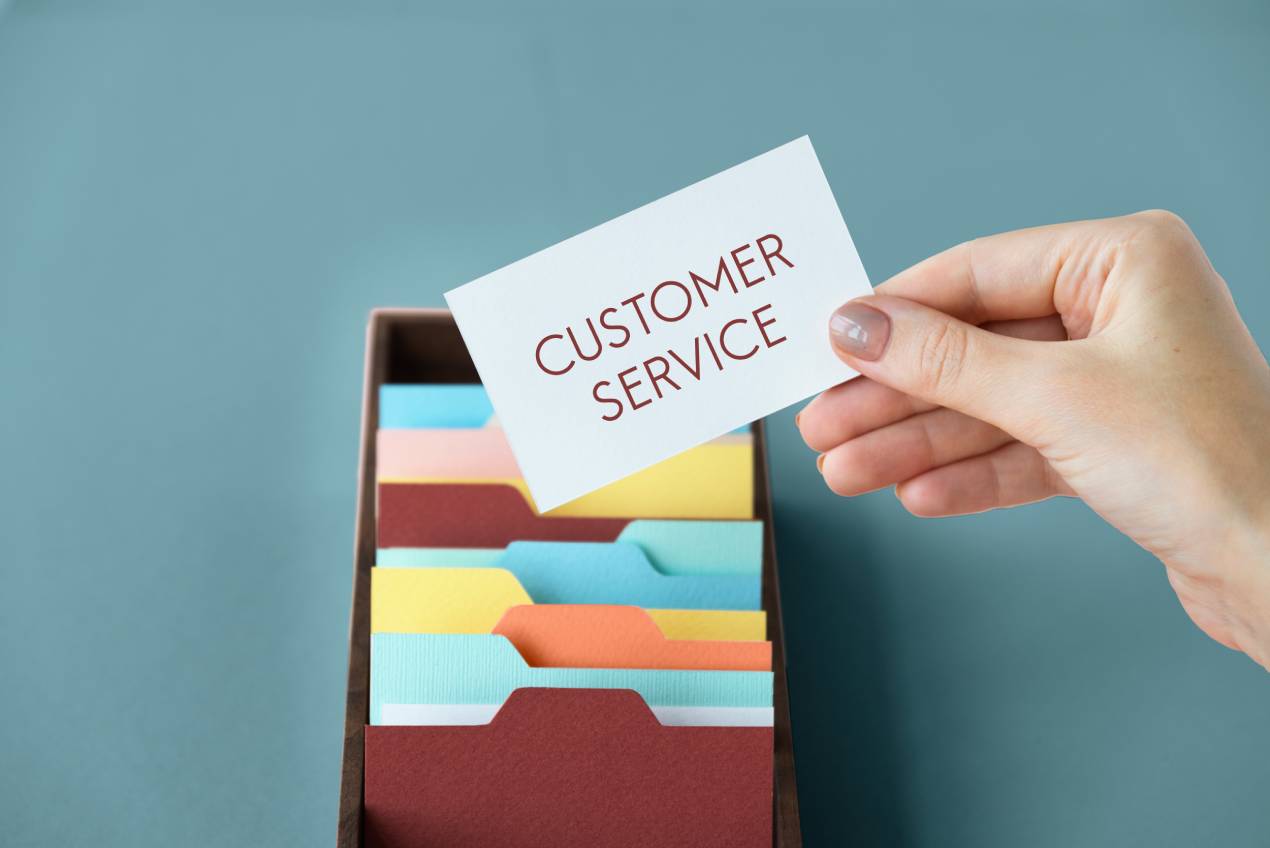Exceptional customer service drives businesses forward. It can transform casual shoppers into loyal advocates. Companies must embrace vital service objectives for long-term success.
These objectives cater to the evolving needs of customers. By prioritizing satisfaction and engagement, businesses create lasting relationships.
In this article, we’ll explore the top 10 customer service objectives. Learn how to foster loyalty and provide timely resolutions.
Discover the power of technology and continuous improvement in service excellence.
Table of Contents
Enhancing Customer Satisfaction: The Foundation of Success

Enhancing customer satisfaction is crucial for business success. Resolve customer questions fast to boost satisfaction.
Positive experiences lead to loyal, happy customers. Repeat business and retention rates soar when customers feel valued.
Improving ratings and reviews is a key objective. Deliver exceptional customer service to win more stars. Here’s a quick checklist for service success:
- Be friendly and empathetic.
- Respond quickly to inquiries.
- Listen actively.
- Offer solutions that meet customer expectations.
Engagement boosts loyalty. A friendly, responsive team encourages repeat business. Excellent communication skills enhance the customer journey and customer relationships.
Collecting feedback is also vital. Understand customer pain points and make necessary improvements. Analyze customer data to tailor service strategies.
| Objective | Strategy | Outcome |
|---|---|---|
| Fast resolution | Implement an efficient helpdesk system | Happy, satisfied customers |
| Boost reviews | Offer excellent service | Increased star ratings |
| Improve loyalty | Engage empathetically | Loyal customers |
Focus on these objectives to build satisfied, loyal customers. Their positive experiences form the backbone of your business success.
Fostering Customer Loyalty: Building Long-Term Relationships
Building customer loyalty is essential for long-term success. Consistent service is key; 36% of people are loyal due to great support.
Prioritize customer needs to turn them into advocates. Loyal customers bring referrals that enhance your brand. Establish dedicated support channels for loyal customers. These allow instant communication when they need help.

Hassle-free interactions create happy customers and strengthen relationships over time. One effective way to manage this process is through helpdesk software like ThriveDesk, Zendesk, Freshdesk etc.
Each of these platforms provides robust features to streamline customer support and enhance the overall service experience.
The customer journey should be seamless and consistent. Every interaction with your brand is a loyalty-building opportunity.
Well-crafted upselling and cross-selling campaigns increase revenue. This strategy boosts the customer lifetime value for your business.
Key Steps to Foster Loyalty:
- Provide consistent and high-quality service.
- Use targeted campaigns to maximize value.
- Offer exceptional, easily accessible customer support.
Here’s a simple comparison table for easy reference:
| Strategy | Benefit |
|---|---|
| Consistent Service | Higher recommendation and loyalty |
| Customer-Centric Approach | Converts satisfied to loyal customers |
| Dedicated Support Channels | Enhances customer relationships |
Providing Timely Resolutions: The Key to Customer Happiness
Quickly resolving customer questions is crucial. Swift answers boost customer satisfaction and loyalty. First Response Time (FRT) and Time to Resolution (TTR) are essential metrics.
They measure efficiency in handling customer queries. Many customers value these fast solutions. Businesses should regularly monitor their resolution time. This ensures customer issues are addressed promptly.
High FRT can affect customer retention negatively. Quick initial replies from support teams are essential. Timely responses are key for customer happiness.
Here’s a simple example:
| Metric | Desired Outcome |
|---|---|
| FRT | Less than 1 hour |
| TTR | Within 24 hours |
Regular satisfaction surveys identify dissatisfaction causes. These tools drive service improvements. Better service delivery equals faster resolutions.
Finally, timely resolutions maintain happy customers. They strengthen customer relationships.
Empowering Customer Service Representatives: Enabling Excellence
Empowering your customer service representatives is vital. Ongoing training fuels their knowledge of policies, procedures, and products. This leads to improved performance and job satisfaction.
Regular training sessions provide agents with essential skills. Handling unsatisfied customers or payment issues becomes approachable. Self-service resources empower customers to resolve simple issues independently.
When customers handle simple problems, the focus shifts. Customer service teams can tackle complex tasks effectively. This strategy enhances the efficiency of support systems.
Employee satisfaction influences the quality of customer service. Conduct employee satisfaction surveys for continual improvement. A happy team leads to satisfied customers.
Prompt resolution of inquiries is a crucial objective. Agents should deliver timely solutions with empathy.
Customer Service Statistics:
| Objective | Statistics |
|---|---|
| Training Improvement | 30% Performance Boost |
| Self-Service Growth | 50% Issue Resolution |
| Job Satisfaction | 25% Higher Rates |
Leveraging Technology: Streamlining the Customer Experience
Technology has the power to transform customer service in amazing ways. One key aspect of AI Customer Service is the use of automated systems like AI chatbots, which help reduce dependency on human agents while improving efficiency.
They manage most customer issues efficiently, creating streamlined service operations. Self-service options such as online FAQs empower customers.
This fosters swift issue resolution and enhances the overall service experience. Businesses should strategically utilize technology for optimized workflow processes.
These improvements enhance efficiency and uphold high-quality service standards. Integrating customer service software, benefits support teams immensely.
It streamlines procedures, offering a more exceptional customer experience. Analyzing customer data is also crucial. It identifies potential issues before affecting satisfaction.
With proactive solutions, companies can prevent arising problems. Additionally, quick response times boost customer retention and happiness.
Here’s a simple tech impact table:
| Technology Aspect | Benefit |
|---|---|
| AI-powered chatbots | Reduce agent dependency |
| Online FAQs | Empower customer problem-solving |
| Data Analysis | Proactively identify and solve issues |
Cultivating a Customer-Centric Culture: Aligning Values and Practices
Cultivating a customer-centric culture transforms customer interactions. It ensures businesses prioritize customer needs and goals. To achieve this, sometimes bending company policies is necessary.
This approach centers around making sure the customer remains the focus of all strategies. Personalizing interactions with customer data significantly boosts experiences.
Customers feel valued and appreciated. This personalization is key in ensuring individuals aren’t just seen as numbers. Ultimately, it forges stronger relationships and enhances satisfaction.
A primary objective in customer service is increasing retention. Satisfaction with products and efficient problem-solving keeps customers happy.
Measurable, achievable, relevant, and time-bound objectives help align team efforts. These are critical for integrating customer service strategies with company goals.
Advocacy initiatives play a pivotal role. They transform satisfied customers into loyal advocates.
These advocates often spread positive word-of-mouth, providing invaluable referrals. Such strategies prove beneficial for long-term business success.
Consider this table for focus areas:
| Focus Area | Objective |
|---|---|
| Personalization | Make customers feel valued |
| Retention | Increase customer satisfaction |
| Advocacy | Convert satisfied customers to advocates |
Implementing Feedback Mechanisms: Listening to Customer Voices
Implementing feedback mechanisms is essential for understanding customer needs. Collect feedback through surveys and online questionnaires.
These methods highlight areas of improvement in customer service. An effective customer feedback loop is crucial. It helps businesses refine customer experiences and services.
Regular feedback collection provides invaluable insights. Understanding preferences can enhance products and services.
Following interactions, use feedback forms to gauge satisfaction. This identifies service team effectiveness. It offers a clear view of possible improvements.
Collaboration between teams improves feedback efficiency. Addressing common issues becomes seamless.
Regular collaboration encourages continuous enhancement of services. Listening to customers fosters trust and loyalty.
Here’s a quick feedback checklist:
- Conduct regular surveys and questionnaires.
- Analyze feedback for insights and trends.
- Use data to improve service strategies.
- Collaborate across teams for effective solutions.
| Feedback Mechanism | Benefits |
|---|---|
| Surveys | Insight into improvements |
| Online Forms | Gauge customer satisfaction |
| Team Collaboration | Efficient issue resolution |
Always remember, listening to customers keeps them satisfied. It’s a journey towards exceptional service.
Training and Development: Investing in Employee Skills
Investing in employee training enhances customer service agents’ expertise.
Training covers industry practices and technologies, boosting their skills. Knowledge empowers them to address customer queries effectively.

Providing exceptional customer service requires a comprehensive approach. One of the best tips for customer service is to prioritize employee training while also focusing on their mental well-being.
Encouraging a healthy work-life balance can significantly reduce stress and create a more positive and productive environment for both employees and customers.
It’s crucial to integrate well-being into training programs for this purpose. Happy and balanced agents are key to satisfied customers.
Empowering the customer service team requires regular training. They need to be proficient in company policies. This ensures they handle challenging interactions confidently.
A knowledgeable team leads to loyal customers and improved customer relationships.
Anonymous satisfaction surveys improve employee contentment. These surveys track how happy employees feel. It contributes to a competent customer service team.
| Training Focus | Benefit |
|---|---|
| Industry Practices | Expertise in customer service |
| Technology Updates | Efficient issue resolution |
| Well-being Emphasis | Reduced job-related stress |
| Company Policies | Confident interaction management |
Measuring Success: Key Metrics for Customer Service Objectives
Measuring customer service success requires specific metrics. Customer satisfaction ratings showcase how happy customers are.
Response times and resolution rates highlight service efficiency. Regular customer feedback identifies improvement areas, enhancing experiences.
Metrics like repeat business rates indicate customer loyalty. This helps in evaluating customer service initiatives’ effectiveness.
Setting realistic goals ensures objectives are achievable. Consider skills, experience, and resources available. Employ analytics solutions for automating metric measurements. Visualize performance data with ease and clarity.
Here’s a quick overview:
| Metric | Importance |
|---|---|
| Customer Satisfaction | Measures happiness and loyalty |
| Response Time | Evaluates communication efficiency |
| Resolution Rate | Assesses issue-solving effectiveness |
| Repeat Business Rates | Indicates loyalty and initiative success |
Incorporate these strategies and tools to fulfill your customer service goals successfully.
Continuous Improvement: Adapting and Evolving Strategies
Continuous improvement in customer service is key. Establish clear objectives to inspire growth and skill enhancement.
Those customer service objectives act as benchmarks, letting companies measure success effectively. With well-defined goals, customer service representatives can prioritize tasks clearly, boosting accountability.
Gathering customer feedback is crucial for ongoing betterment. This feedback uncovers insights that can refine business strategies.
As customer service teams adapt, they not only aim to meet but exceed customer expectations. Here’s a simplified view of the process:
| Objective | Benefit |
|---|---|
| Skill Enhancement | Motivates representative growth |
| Performance Metrics | Measures company achievements |
| Task Prioritization | Fosters accountability |
By setting challenging yet achievable goals, representatives are encouraged to innovate. Keep evolving strategies to create more satisfied customers and loyal patrons.
Aim to make every customer journey exceptional and memorable. Embrace continuous improvement and watch customer satisfaction soar!





